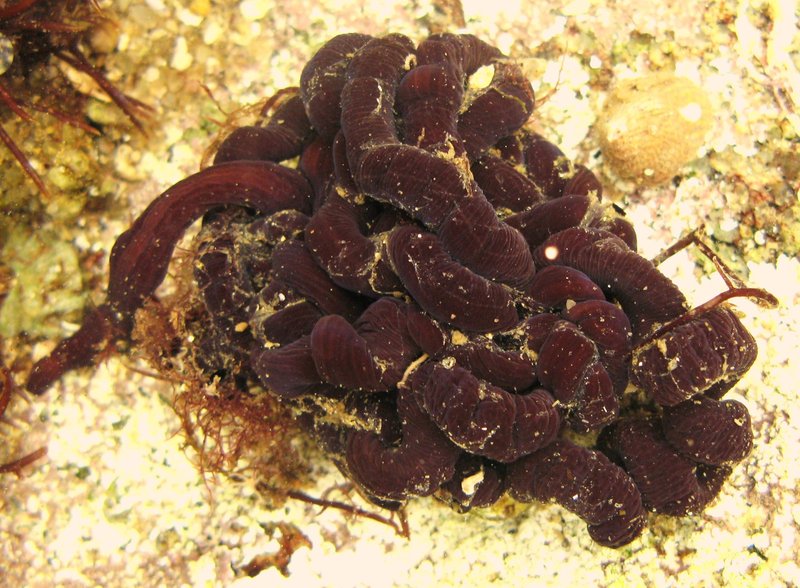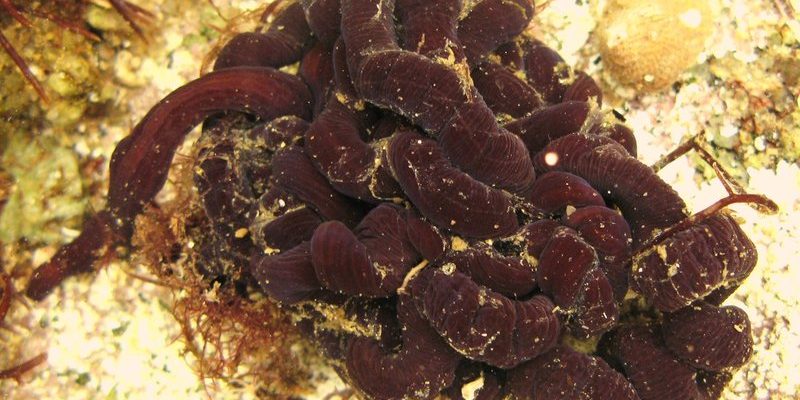
Bootlace worms, or *Lineus longissimus*, are among the longest animals on the planet. They can grow up to 30 meters long! Imagine that—something longer than your average school bus, hiding in the sediment where rivers and oceans meet. They may not be the first creatures you think of when you consider marine life, but bootlace worms contribute significantly to nutrient cycling and habitat structure in estuaries. Let’s dive into the world of bootlace worms to see why they matter so much.
What Are Bootlace Worms?
Bootlace worms belong to a class of animals called nemerteans, or ribbon worms. They get their name from their long, thin shape, resembling a shiny bootlace. These worms have a unique ability to stretch and contract, which helps them navigate through soft sediments and hunt for food.
You might be wondering why they’re important. Bootlace worms are predators, feeding primarily on small invertebrates and even other worms. This predatory behavior helps keep populations of these organisms in check, maintaining a balance in the ecosystem. They possess a special feeding structure called a proboscis, which they can extend to capture prey quickly—think of it like a fast-moving tongue that snaps up lunch!
Another fascinating aspect of bootlace worms is their regenerative abilities. If cut in half, they can regrow parts of their bodies, making them quite resilient. This adaptability allows them to thrive in various conditions, showcasing nature’s ingenuity.
The Role of Bootlace Worms in Nutrient Cycling
In an estuarine ecosystem, everything is interconnected. Nutrient cycling refers to the way nutrients flow through different components of an ecosystem, from plants to animals and back again. Bootlace worms play a vital role in this cycle.
As these worms feed on organic matter in the sediment, they help break it down into smaller particles. This process produces nutrients that plants, algae, and other organisms can absorb. Essentially, bootlace worms act as nature’s recyclers, ensuring nutrients are available for the next generation of life in the estuary.
When bootlace worms die or are consumed, the nutrients stored in their bodies are released back into the ecosystem. This contribution is crucial, especially in estuaries, where nutrient levels can fluctuate significantly. You could say bootlace worms are like the unsung heroes of nutrient cycling, working quietly behind the scenes to keep the ecosystem healthy.
Habitat and Distribution of Bootlace Worms
Bootlace worms are typically found in estuaries, where freshwater from rivers mixes with salty ocean water. They prefer soft, muddy sediments, which provide the perfect environment for them to wiggle and burrow. This habitat also offers plenty of food sources, such as decaying organic matter and smaller invertebrates.
You might find bootlace worms along coastlines around the world, from the frigid waters of the Arctic to warmer, tropical regions. However, their presence often depends on the health of the estuary itself. Pollution, habitat destruction, and climate change can negatively impact bootlace worm populations, leading to declines in the overall health of estuarine ecosystems.
Interestingly, researchers often use bootlace worms as bioindicators, which means that studying them can provide insights into the environmental conditions of their habitats. By monitoring their populations, scientists can gauge the health of estuaries and determine if they need protection or restoration efforts.
Interactions with Other Species
Bootlace worms don’t live in isolation; they’re part of a complex web of interactions. As predators, they help control the populations of smaller invertebrates, which can lead to a healthier ecosystem. On the flip side, they also serve as prey for larger fish and birds, linking them to the broader food web.
These interactions highlight the importance of biodiversity in estuarine ecosystems. Each species, from the smallest bacteria to the largest predator, plays a specific role that contributes to the overall stability of the environment. When one species, like the bootlace worm, is affected, it can create ripple effects that impact many others.
For example, if bootlace worm populations decline due to pollution, the organisms they prey on might explode in number, leading to overgrazing of phytoplankton and algae. This scenario could ultimately harm fish populations that depend on the food chain. It’s a clear reminder that every creature, no matter how small, is essential.
Conservation and Future of Bootlace Worms
Given their significance in estuarine ecosystems, conservation efforts for bootlace worms and their habitats are crucial. Unfortunately, many estuaries are facing threats from human activities, including pollution, overfishing, and climate change. Protecting these delicate environments is vital not just for bootlace worms but for the countless species that rely on them.
Conservation strategies might include restoring habitats, reducing pollution, and implementing sustainable fishing practices. By focusing on the health of estuarine ecosystems, we can help ensure the survival of bootlace worms and all the benefits they provide.
You might be wondering what you can do to help. Supporting local conservation initiatives or participating in clean-up efforts at your nearest estuary can make a big difference. Every little bit helps when it comes to protecting our planet’s biodiversity.
The Importance of Awareness
Understanding creatures like bootlace worms can foster greater appreciation for the natural world. The more we know, the more likely we are to care about these often-overlooked organisms. Initiatives such as community education programs and public awareness campaigns play a significant role in promoting the importance of estuarine ecosystems.
Imagine taking a walk along the shore and knowing that beneath your feet, bootlace worms are working tirelessly to keep the environment thriving. Spreading this knowledge can help inspire others to take action to protect these unique ecosystems.
In conclusion, bootlace worms might not be the most glamorous inhabitants of estuarine ecosystems, but their contributions are undeniable. By understanding their roles and recognizing the threats they face, we can work together to ensure a healthier planet for future generations. Remember, even the smallest creatures have big impacts!

